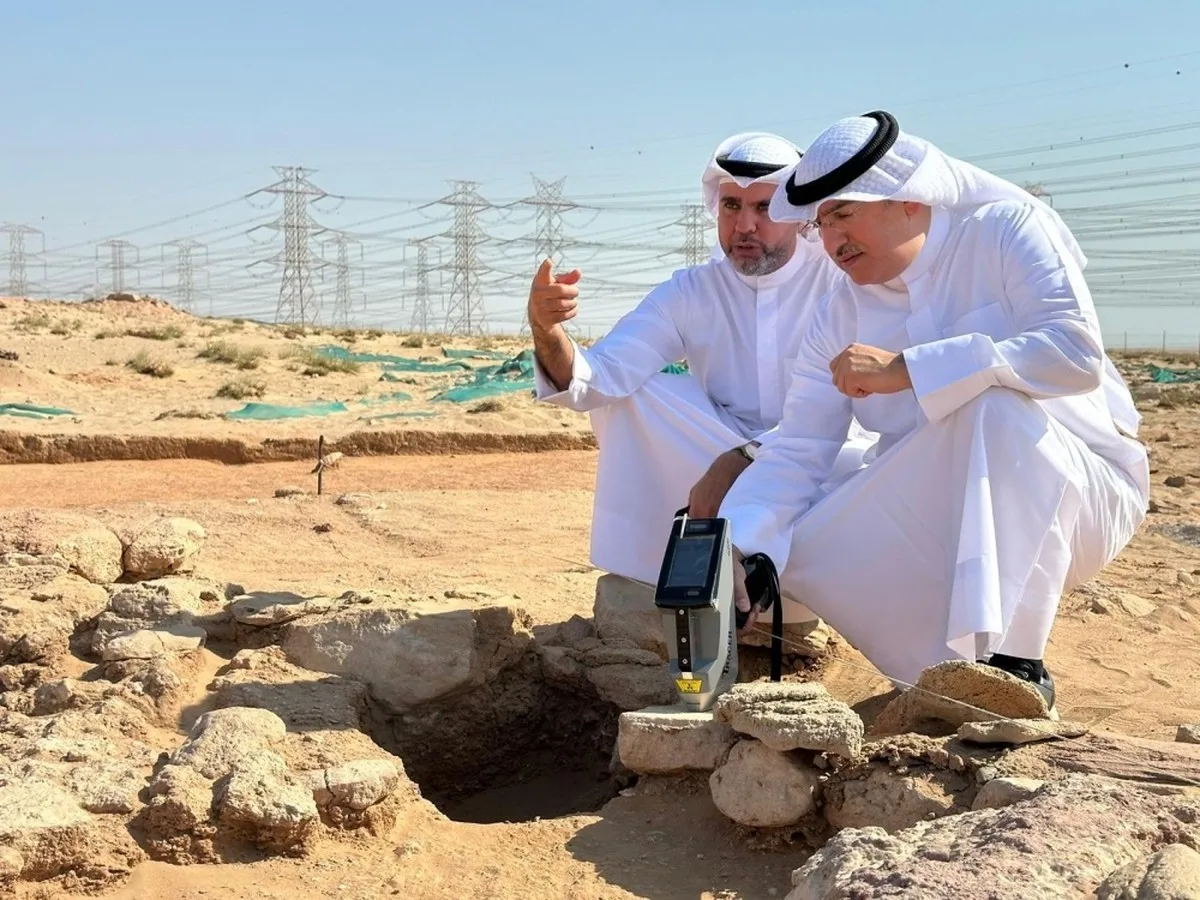17/11/2024
17/11/2024

KUWAIT CITY, Nov 17: A Kuwaiti-Polish archaeological mission has uncovered significant findings in Subiya, northern Kuwait, shedding light on the prehistoric Ubaid culture that dates back approximately 7,700 years. The discovery was made at the Bahra 1 site, a settlement located in the Subiya desert.
Mohammad bin Redha, Assistant Secretary-General for Antiquities and Museums at the National Council for Culture, Arts, and Letters (NCCAL), announced that the mission had likely discovered a courtyard or workshop used for making jewelry and ornaments from shells. This site, which has been excavated over several seasons, has yielded numerous ornaments, pottery items dating back more than 7,000 years, and an important find: a small clay human head, the first of its kind in the Arabian Gulf region.
In a press statement issued on Sunday, Bin Redha emphasized that this season's excavations also involved various sectors in Kuwait, including Kuwait University and the Polish mission. The goal is to utilize modern laboratory equipment to address questions about the materials used at the site and to investigate the types of plants and environmental conditions during the Ubaid period.
Dr. Hassan Ashkanani, Professor of Archaeology and Anthropology at Kuwait University, highlighted the importance of the clay human head. Dating back to approximately 7,700 to 7,500 years ago, the head is distinguished by its oblong skull, slanted eyes, and flat nose, which are characteristic features of small statues from the Ubaid culture. While similar statues have been found in Mesopotamia, this discovery, along with the associated workshop, provides deeper insight into the development of human culture during the Neolithic Age.
Professor Piotr Bielinski, co-director of the Kuwaiti-Polish archaeological mission, noted that the presence of such artifacts raises intriguing questions about their purpose, particularly in terms of their symbolic or ritual significance for the ancient community.
Additional discoveries at Bahra 1 include evidence of local pottery production. Two distinct types of pottery were identified: imported Ubaid pottery and coarse red pottery, the latter believed to be a local product in the Gulf region. Notably, a vessel made from unfired clay, along with scientific analyses overseen by Professor Anna Smogorzewska, confirmed that Bahra 1 is the oldest known site for pottery production in the Gulf, providing conclusive evidence of the settlement’s development.
The Kuwaiti-Polish mission has resumed its work at Bahra 1, which dates back to over 5,700 BCE. It is the oldest and largest known Ubaid period settlement in the Arabian Peninsula. Since 2009, the site has been a focal point for archaeological research, benefiting from the ongoing collaboration between NCCAL and the Polish Center for Mediterranean Archaeology at the University of Warsaw. (KUNA(


